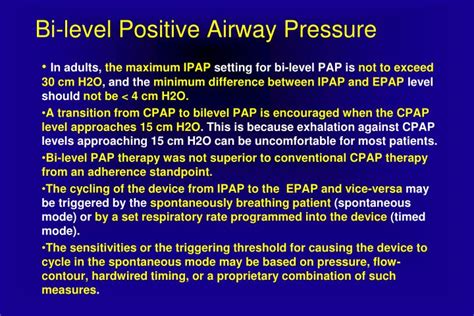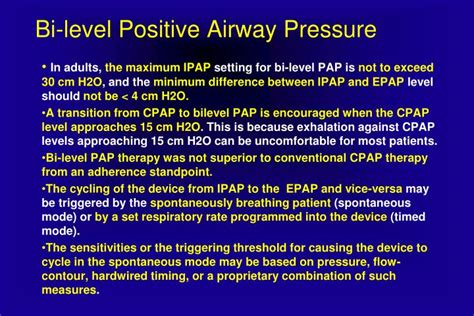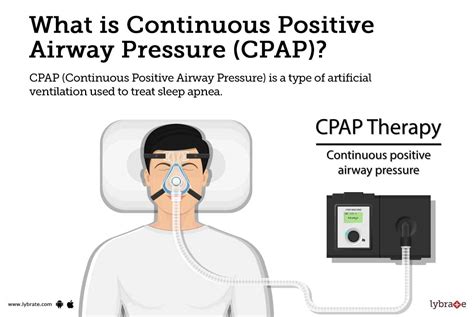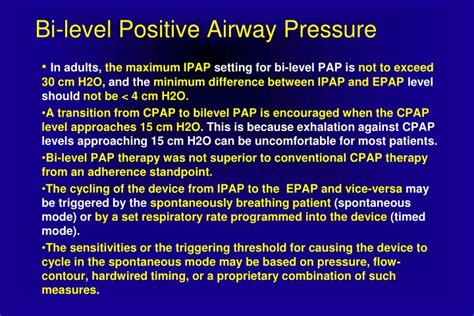Intro
Discover Bilevel Positive Airway Pressure therapy, a sleep apnea treatment using BiPAP machines, offering adjustable pressure settings for inhalation and exhalation, improving respiratory function and overall sleep quality with CPAP alternatives.
Bilevel positive airway pressure (BiPAP) therapy has become an essential treatment for various respiratory conditions, including sleep apnea, chronic obstructive pulmonary disease (COPD), and respiratory failure. The importance of BiPAP therapy lies in its ability to provide two different levels of air pressure, one for inhalation and a lower level for exhalation, making it more comfortable for patients to breathe. This innovative therapy has revolutionized the way respiratory conditions are managed, offering patients a more effective and tolerable treatment option.
The significance of BiPAP therapy can be attributed to its ability to address the underlying causes of respiratory conditions, such as obstructive sleep apnea (OSA). OSA is a condition characterized by repeated episodes of partial or complete upper airway obstruction during sleep, leading to disrupted sleep patterns, daytime fatigue, and increased risk of cardiovascular disease. BiPAP therapy helps to maintain the patency of the upper airway, preventing collapses and ensuring uninterrupted breathing. By doing so, BiPAP therapy improves sleep quality, reduces symptoms of OSA, and enhances overall quality of life.
The growing demand for BiPAP therapy can be attributed to its effectiveness in managing a range of respiratory conditions. In addition to OSA, BiPAP therapy is used to treat COPD, a progressive lung disease characterized by chronic inflammation and airflow limitation. BiPAP therapy helps to reduce the workload on the lungs, improving breathing patterns and increasing oxygenation. Furthermore, BiPAP therapy is used in the management of respiratory failure, a life-threatening condition that requires immediate medical attention. By providing ventilatory support, BiPAP therapy helps to stabilize patients and prevent further deterioration.
Introduction to Bilevel Positive Airway Pressure Therapy

Benefits of Bilevel Positive Airway Pressure Therapy
The benefits of BiPAP therapy are numerous, and they can be attributed to its ability to provide effective ventilatory support. Some of the key benefits of BiPAP therapy include: * Improved sleep quality: BiPAP therapy helps to maintain the patency of the upper airway, preventing collapses and ensuring uninterrupted breathing. * Increased oxygenation: BiPAP therapy helps to improve lung function, increasing oxygen levels in the blood and reducing the risk of respiratory complications. * Reduced symptoms: BiPAP therapy helps to alleviate symptoms of respiratory conditions, such as shortness of breath, coughing, and wheezing. * Enhanced quality of life: BiPAP therapy improves overall quality of life, allowing patients to engage in daily activities and maintain their independence.Working Mechanism of Bilevel Positive Airway Pressure Therapy

Steps Involved in Bilevel Positive Airway Pressure Therapy
The steps involved in BiPAP therapy include: 1. Initial assessment: A healthcare professional assesses the patient's condition, determining the need for BiPAP therapy. 2. Machine setup: The BiPAP machine is set up, and the pressure levels are programmed according to the patient's needs. 3. Mask fitting: The patient is fitted with a mask or nasal interface, which delivers the air pressure. 4. Therapy initiation: The BiPAP therapy is initiated, and the patient is monitored for any adverse effects. 5. Ongoing monitoring: The patient's condition is continuously monitored, and the BiPAP settings are adjusted as needed.Practical Examples of Bilevel Positive Airway Pressure Therapy

Statistical Data on Bilevel Positive Airway Pressure Therapy
Statistical data on BiPAP therapy highlights its effectiveness in managing respiratory conditions. For example: * A study found that BiPAP therapy improved sleep quality in 80% of patients with OSA. * A study found that BiPAP therapy increased oxygenation in 90% of patients with COPD. * A study found that BiPAP therapy reduced hospitalization rates by 50% in patients with respiratory failure.Common Misconceptions About Bilevel Positive Airway Pressure Therapy

Future Directions of Bilevel Positive Airway Pressure Therapy
The future of BiPAP therapy looks promising, with ongoing research and development aimed at improving its effectiveness and accessibility. Some potential future directions include: * Portable BiPAP machines: Smaller, more portable BiPAP machines could increase accessibility and convenience. * Advanced sensors: New sensors could monitor patient condition in real-time, allowing for more precise adjustments to BiPAP settings. * Telemedicine integration: BiPAP therapy could be integrated with telemedicine platforms, enabling remote monitoring and adjustments.Conclusion and Final Thoughts

What is bilevel positive airway pressure therapy?
+Bilevel positive airway pressure therapy is a type of respiratory therapy that delivers two different levels of air pressure, one for inhalation and a lower level for exhalation, to help patients breathe more comfortably.
What are the benefits of bilevel positive airway pressure therapy?
+The benefits of bilevel positive airway pressure therapy include improved sleep quality, increased oxygenation, reduced symptoms, and enhanced quality of life.
What are the common misconceptions about bilevel positive airway pressure therapy?
+Common misconceptions about bilevel positive airway pressure therapy include that it is only used for sleep apnea, that it is uncomfortable, and that it is expensive.
We hope this article has provided you with a comprehensive understanding of bilevel positive airway pressure therapy. If you have any further questions or would like to share your experiences with BiPAP therapy, please feel free to comment below. Additionally, if you found this article informative, please share it with others who may benefit from this information.
